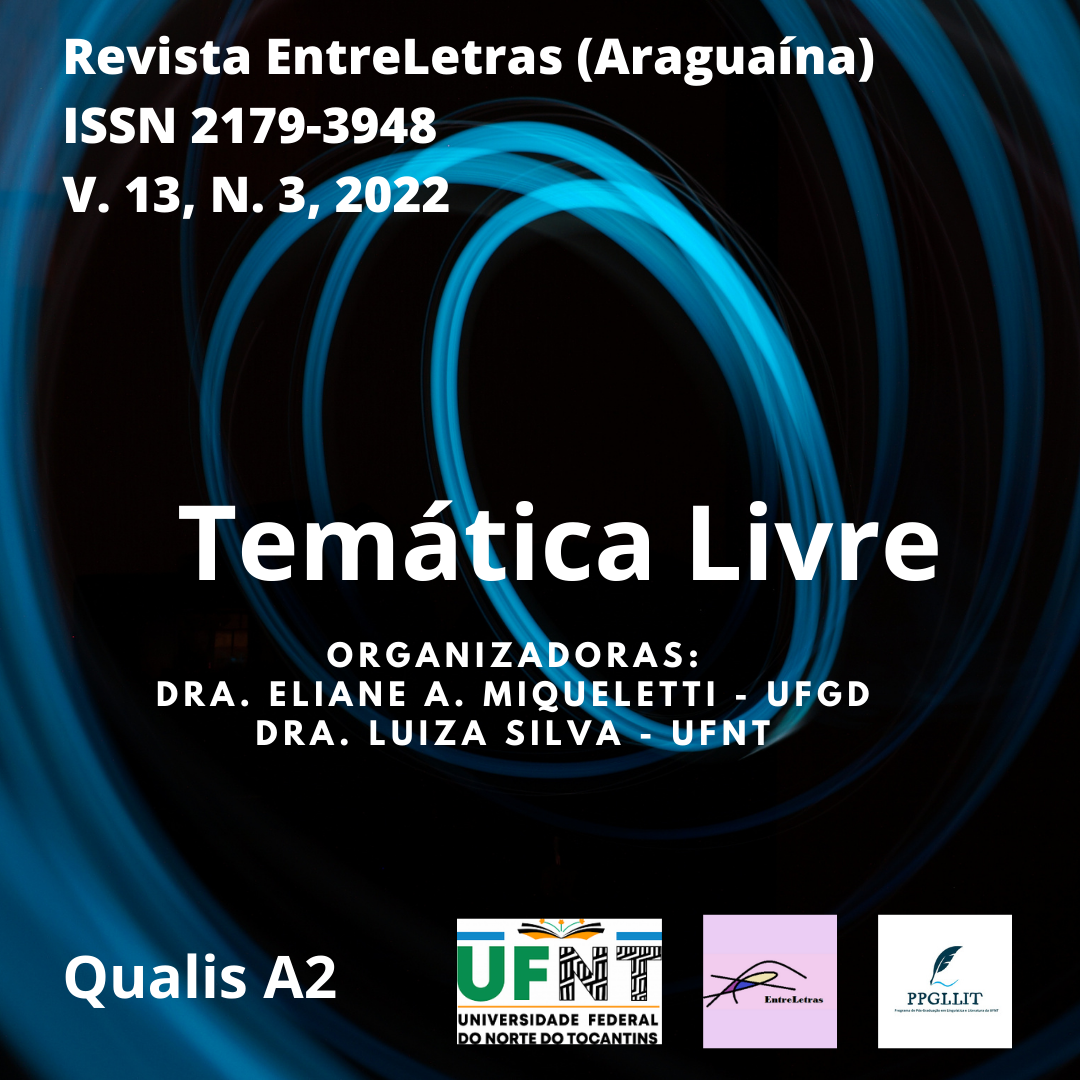HI-FI (1999) AND AUGUSTO DE CAMPOS HYBRIDIZATION AND TRANSLATION IN THE AGE OF MEDIA ART
HYBRIDIZATION AND TRANSLATION IN THE AGE OF MEDIA ART
DOI:
https://doi.org/10.20873/uft2179-3948.2022v13n3p200-217Keywords:
media art, translation, open work, literary theory, post utopiaAbstract
The term media art is responsible for encompassing poetics interested in the adventure between media and technological supports – in an artistic conception based on the formal convergence between expressions. Therefore, this article, dialoguing with the theoretical production arising from the universes of communication and literary theory, critically reflects the translation operated by Ivan Cardoso in the short film Hi-Fi (1999) of the aesthetic information contained in the poetics of Augusto de Campos, hybridizing poetry, music, visual arts, etc. in cinematographic language, in an opening dynamic, as conceptualized by Eco (1988). We will also discuss the post-utopian panorama (CAMPOS, 1997) of contemporary artistic production, an index of modernity.
Downloads
References
ALENCAR, Guilherme. Análise de imagem dos cartazes do festival de cannes de 1970 a 1979. Orientador: Lindsay Jemima. 2019. 70 f. TCC (Tecnólogo) – Curso Superior de Tecnologia em Design Gráfico, Universidade Tecnológica Federal do Paraná, Paraná, 2019. Disponível em: https://repositorio.utfpr.edu.br/jspui/bitstream/1/13852/1/CT_CODEG_2019_1_19.pdf.
BENJAMIN, Walter. Magia e técnica, arte e política. 7.ed. São Paulo: Brasiliense, 1994.
CAMPOS, Augusto de. Outro. São Paulo: Perspectiva, 2015.
CAMPOS, Haroldo de. O arco-íris branco: ensaios de literatura e cultura. Rio de Janeiro: Imago Ed, 1997.
CARDOSO, Ivan. O mestre do terrir. São Paulo: imprensaoficial, 2008.
ECO, Umberto. Obra aberta. São Paulo: Perspectiva, 1988.
FERREIRA, Jairo. Cinema de invenção. 3.ed. Rio de Janeiro: azougue editorial, 2016.
JAKOBSON, Roman. A geração que esbanjou seus poetas. São Paulo: SESI-SP, 2017.
LEAL, C. Brasil é horrível para fazer cinema, diz Ivan Cardoso, lenda do underground. Folha de S. Paulo. São Paulo, 16 abr. 2022. Disponível em: https://www1.folha.uol.com.br/ilustrissima/2022/04/brasil-e-horrivel-para-fazer-cinema-diz-ivan-cardoso-lenda-do-underground.shtml?origin=folha. Acesso em: 20 abr. 2022.
MACHADO, Arlindo. Arte e mídia. 3.ed. Rio de Janeiro: Jorge Zahar Ed., 2010.
PELLEGRINI, Tânia et al. Literatura, cinema e televisão. São Paulo: Editora Senac São Paulo: Instituto Itaú Cultural, 2003.
PLAZA, Julio. Tradução intersemiótica. São Paulo: Perspectiva, 1987.
PUPPO, Eugênio (org.). Cinema marginal brasileiro e suas fronteiras: filmes produzidos nos anos 1960 e 1970. São Paulo: Heco Produções Ltda, 2012.
RISÉRIO, Antonio. Ensaio sobre o texto poético em contexto digital. Salvador: Fundação Casa de Jorge Amado; COPENE, 1998.
ROCHA, Glauber. Eztetyka da fome. Hambre espacio cine experimental. Disponível em: https://hambrecine.com/2013/09/15/eztetyka-da-fome/. Acesso em: 12 maio. 2022.
SONTAG, Susan. Contra a interpretação: e outros ensaios. São Paulo: Companhia das letras, 2020.
XAVIER, Ismail. Alegorias do subdesenvolvimento: cinema novo tropicalismo cinema marginal. São Paulo: Cosacnaify, 2012.
Downloads
Published
How to Cite
Issue
Section
License
Copyright (c) 2023 EntreLetras

This work is licensed under a Creative Commons Attribution 4.0 International License.
Os autores mantêm os direitos autorais e concedem à revista o direito de primeira publicação, com o trabalho simultaneamente licenciado sob a Creative Commons 4.0 que permite o compartilhamento do trabalho com reconhecimento da autoria do trabalho e publicação inicial nesta revista.
Os autores têm autorização para assumir contratos adicionais separadamente, para distribuição não-exclusiva da versão do trabalho publicada nesta revista (ex.: publicar em repositório institucional ou como capítulo de livro), com reconhecimento de autoria e publicação inicial nesta revista.










